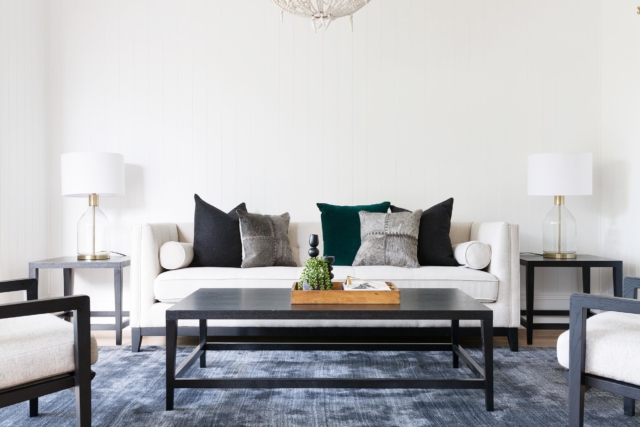Interested in starting a career as a Property Stylist?
Not sure how to turn this passion into a six figure career?
Start Here: Free Video Training Series
Hi team, it’s Naomi Findlay here!
Painting walls is by far one of the best and easiest ways to freshen up a room. From toning down that outdated yellow tinge in the living room, to creating beautiful pops of colour in the kids’ bedrooms, walls are the canvas to your interior vision.
To ensure your new colour turns out just the way you had in mind, it is important to spend some time properly preparing your chosen room (or rooms) before whipping out a paintbrush.
Remove fixtures and furniture
Take a cue from professional painters – the first thing they do is ensure that no furniture gets in the way of their ladders, paint tins and rollers. If your DIY project is the living room, start by removing the couch, Turkish rug and coffee table. This way, you’ll not only protect your furniture from paint splatter, but also ensure that you aren’t tripping over or struggling to reach parts of your wall when you start painting. The same goes with small fixtures such as picture and coat hooks as well as light switch covers – remove them from the wall so you can apply paint smoothly).
Protect floors and furniture
Sometimes it may not be possible to completely remove all the furniture from a room. If you have a particularly large lounge suite, or a wall cabinet that is too delicate to remove, move them away from the walls and cover with drop sheets or old rags (although a canvas sheet will do better at preventing any heavy paint splatter from seeping through). Do the same with your floors – there’s nothing worse than finding specks of dried paint on your polished floors or carpet after a wall painting project.
Be sure to cover any fixtures that can’t be removed – such as skirting boards or fixed shelving – with painter’s tape (or use a masking tape that won’t rip paint off walls).

Clean walls
Dark smudges can seep through a coat of paint, while oil and grease can make it harder for the paint to stick. Clean the walls thoroughly with a bucket of warm, soapy water. Use a mixture of bleach and water for any mouldy spots, leaving it for 15 minutes to allow time for the bleach to do its job. Rinse well, then let the walls dry before moving on to the next step.
It is a good idea to open doors and windows to allow cross-ventilation – this will not only quicken drying time, but also help dissipate any strong chemical smells.
Fix and fill bumps and cracks
Take a good look at your walls – are there any bumps, lumps, cracks or holes? All of these need to be addressed before you lift a paintbrush. If there is peeling paint, scrape it back to remove. If it’s a dent or nail hole, use a premixed filler to fill it in. For any cracks where there might be movement (such as near doors or windows), use an acrylic gap sealant.
Whatever the imperfection is, be sure to sand the area down to a smooth finish after you have finished filling it in or scraping it back – otherwise, you risk a bumpy paint finish that doesn’t adhere properly to the wall.
Finish these areas off with Taubman’s 3 in 1 sealer primer undercoat, and get ready to paint!



 Naomi Findlay is an experienced interior designer, project manager and stylist who also loves sharing her passions and experience by teaching others.
Naomi Findlay is an experienced interior designer, project manager and stylist who also loves sharing her passions and experience by teaching others.
Leave a Reply